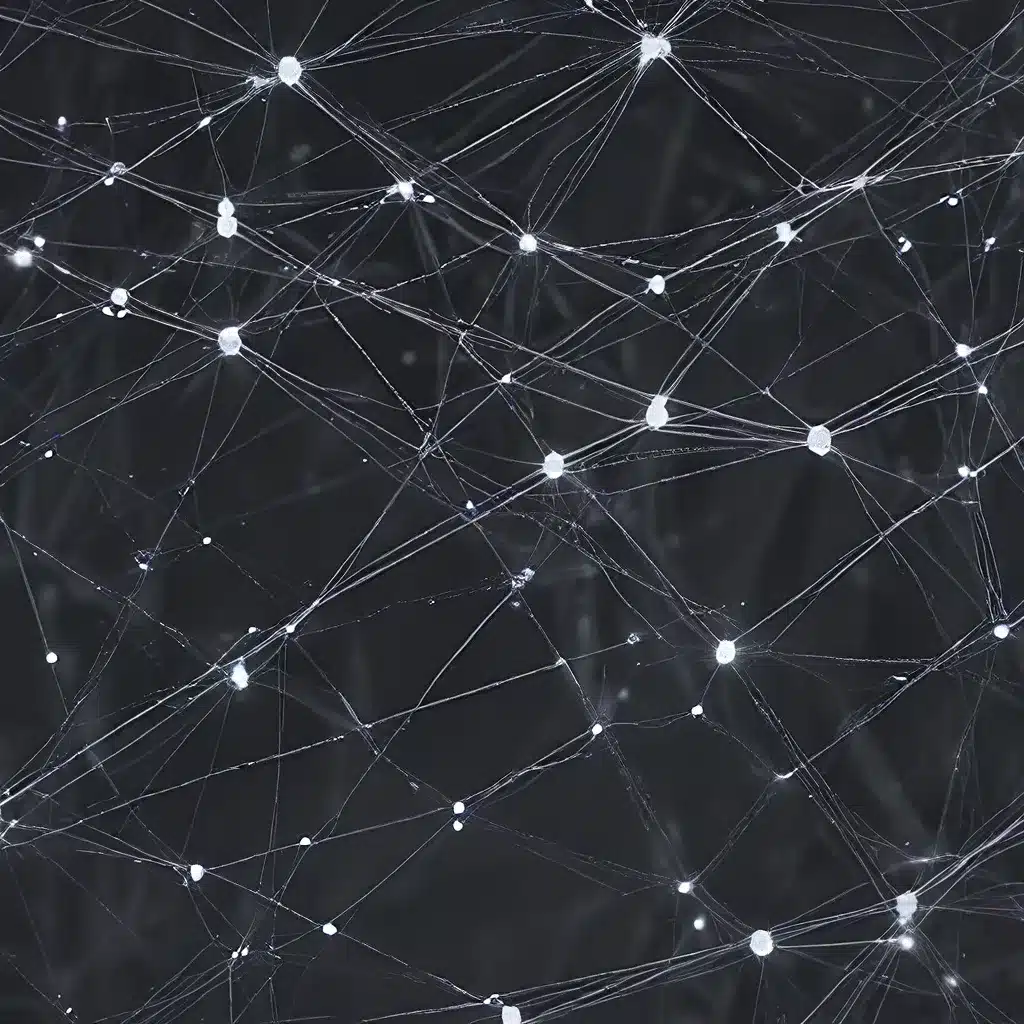
Embracing the Sensor Network Revolution
In the ever-evolving landscape of technology, the rise of sensor networks and the Internet of Things (IoT) has ushered in a new era of distributed intelligence. These interconnected systems, equipped with an array of sensors, have the remarkable ability to collect, process, and share vast amounts of data, transforming the way we interact with the world around us.
At the heart of this revolution lies the concept of collaborative data. By leveraging the collective power of sensor nodes, these networks can gather, analyze, and disseminate information with unprecedented efficiency and precision. This collaborative approach not only enhances the accuracy and reliability of data but also enables the development of innovative applications that were previously unimaginable.
Sensor Network Design: Optimizing for Efficiency and Resilience
Designing an effective sensor network requires a delicate balance of technological advancements and practical considerations. One of the key aspects is the network topology, which can significantly impact the overall performance and energy efficiency of the system.
| Topology | Advantages | Disadvantages |
|---|---|---|
| Star |
– Simple and easy to implement – Centralized control and data processing |
– Single point of failure – Limited scalability |
| Mesh |
– Robust and resilient – Effective for large-scale deployments |
– Increased complexity in setup and management – Higher energy consumption |
| Hierarchical |
– Efficient data aggregation and processing – Scalable for large-scale networks |
– Potential bottlenecks at higher-level nodes – Requires careful coordination and synchronization |
Alongside the network topology, the energy management strategies employed within sensor networks are crucial for ensuring long-term sustainability and reliability. Techniques such as duty cycling, energy harvesting, and dynamic power management can significantly improve the battery life of sensor nodes, enabling them to operate for extended periods without the need for frequent maintenance or replacement.
Harnessing the Power of Sensor Networks: IoT Applications and Beyond
The potential applications of sensor networks and IoT technologies are vast and far-reaching, spanning a wide range of industries and domains. From smart cities and environmental monitoring to industrial automation and healthcare, these distributed systems are revolutionizing the way we interact with and understand our environment.
Smart city initiatives leverage sensor networks to optimize traffic flow, enhance public safety, and improve resource management, leading to more efficient and sustainable urban environments. In the realm of environmental monitoring, sensor networks can detect and respond to changes in air quality, water levels, and natural disasters, empowering authorities to make informed decisions and mitigate potential threats.
Moreover, the integration of sensor networks with industrial automation systems has enabled predictive maintenance, quality control, and supply chain optimization, driving increased productivity and cost savings for businesses. In the healthcare sector, wearable sensors and remote monitoring technologies powered by sensor networks are transforming the way patients receive care, leading to improved outcomes and personalized treatment plans.
Security Challenges and Safeguards in Sensor Networks
As the connectivity and data exchange within sensor networks and IoT ecosystems continue to grow, the importance of security and privacy considerations cannot be overstated. These distributed systems, often operating in uncontrolled environments, face a range of cyber threats, including data breaches, unauthorized access, and network disruptions.
To address these challenges, sensor network designers and IoT developers must employ a multi-layered security approach, incorporating encryption, authentication, and intrusion detection mechanisms. Techniques such as secure protocols, hardware-based security, and distributed anomaly detection can help mitigate the risks associated with these emerging technologies.
Secure protocols, such as TLS/DTLS and IPsec, ensure the confidentiality and integrity of data transmitted between sensor nodes and the broader IoT ecosystem. Hardware-based security, implemented through trusted execution environments and secure elements, can further enhance the protection of sensitive information and critical system components.
Additionally, distributed anomaly detection techniques leverage the collaborative nature of sensor networks to identify and respond to suspicious activities, enabling early detection and mitigation of potential security breaches.
Energy-Efficient Sensor Networks: Powering the Future of IoT
As the IoT landscape continues to expand, the energy efficiency of sensor networks becomes increasingly critical. Sensor nodes, often deployed in remote or hard-to-reach locations, must operate for extended periods without the need for frequent battery replacements or recharging.
Emerging technologies, such as energy harvesting and dynamic power management, are revolutionizing the way sensor networks approach energy consumption. Energy harvesting techniques, which capture and convert ambient energy from sources like solar, wind, or vibration, can extend the operational lifetime of sensor nodes, reducing the reliance on traditional battery-powered systems.
Furthermore, dynamic power management strategies enable sensor nodes to intelligently adjust their energy consumption based on real-time requirements, optimizing resource utilization and network performance. By leveraging techniques like duty cycling, data aggregation, and adaptive sensing, sensor networks can achieve a remarkable balance between energy efficiency and operational capabilities.
Towards a Smarter, More Connected Future
As the world continues to embrace the transformative power of sensor networks and IoT technologies, the opportunities for innovation and societal impact are limitless. From smart cities and environmental monitoring to industrial automation and healthcare, these distributed systems are redefining the way we interact with and understand our surroundings.
By harnessing the power of collaborative data, sensor networks are empowering us to make more informed decisions, optimize resource allocation, and enhance the overall quality of life. As we navigate the complexities of security, energy management, and network design, the future of sensor networks and IoT holds the promise of a smarter, more connected, and more sustainable world.
The sensor-networks.org platform is dedicated to exploring the frontiers of this transformative technology, providing a hub for industry professionals, researchers, and enthusiasts to share knowledge, collaborate, and drive the evolution of this rapidly advancing field.